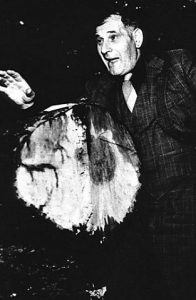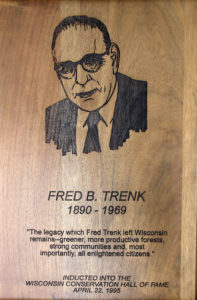“The legacy which Fred Trenk left Wisconsin remains greener, more productive forests, strong communities and most importantly, all enlightened citizens.” – WCHF
Due to the efforts of Fred Benjamin Trenk, children of Wisconsin are blessed with the hands-on learning experience that school forests have to offer. Throughout his life and his career as the Extension Forester at the University of Wisconsin, Trenk was instrumental in reforestation efforts in this state.
Trenk was born in Dubuque, Iowa in 1890. He earned his Bachelors degree in Forestry and his Masters Degree in Botany at Iowa State College. In 1931, Trenk accepted the responsibility of the second Extension Forester in Wisconsin, following the legacy of Fred Wilson. When he began his career, Trenk was faced with a state that had been stripped of its forests because of extensive logging and fires.
For four years, Trenk assisted Professors Walter Rowlands and George Wehrwein in about 200 public meetings to educate and advise area citizens and local officials. Their work resulted in the first county rural zoning ordinances in the nation, recognizing forestry and recreation as alternate land uses.
From 1935 to 1945, Trenk lead the Wisconsin shelterbelt planting project. The project resulted in approximately 3000 miles of farm shelterbelts that prevented wind erosion in the center sandy planes of the state. In 1942, along with University Agricultural Engineer H.D. Bruhn and the Wisconsin Conservation Department, Trenk promoted the design and development of the first mechanical tree planter. He made the rounds of farm equipment dealers as well as junk dealers to find plow chasses that were fashioned into the early prototypes. Sixteen machines were in use by 1944 to relieve the serious manpower shortage for tree planting during World War II. Within 15 years, about 300 machines were operating in Wisconsin alone. The new planter sparked nation-wide interest because one machine in one season could plant as many trees as the entire labor force of the standard CCC camps of the 1930s.
Trenk was a strong supporter of growing and maintaining school and community forests to educate bring environmental education into the lives of people of all ages. Through his work with Ranger Mac McNeel (WCHF Inductee), assistant 4-H leader, Trenk helped establish 350 school forests. In large part, Fred Trenk was instrumental in establishing ten publicly owned or controlled demonstration forests throughout Wisconsin. These forests involved the cooperation of the Lake States Forest Experiment Station and the Wisconsin Conservation Department. It was in these forests where researchers maintained detailed records on tree growth, timber harvest yields and harvesting costs and returns.
Recognizing the potential in alternative forest crops in Wisconsin, Trenk let three programs that fostered organizations among landowners including the Wisconsin Christmas Tree Producers Association, the Wisconsin Maple Syrup Producers Council and a Wisconsin Sphagnum Moss Producers Council. His educational meetings and tours promoted improved management methods, the use of modern equipment, higher product quality and better marketing.
In 1949, Trenk received the Superior Service Award from the US Department of Agriculture. He was honored for “exceptional ability and ingenuity in conducting effective educational programs in connection with farm forestry and related land use problems.”
Resources
Fred B. Trenk Legislative Citation
Fred B. Trenk Obituary, 1969
Fred B. Trenk Wisconsin Forestry Hall of Fame, Wisconsin Society of American Foresters, 1985
Fred B. Trenk Forestry Hall of Fame Induction Speech, by Theodore A. Peterson, 1985
Memorial Resoulution of the Faculty of the University of Wisconsin
Costs of Producing Maple Syrup in Wisconsin by F. B. Trenk and P. B. McNall
School and Community Forests – 1956, article by F. B. Trenk for Wisconsin Conservation Bulletin
School and Community Forests – 1957, article by F. B. Trenk for Wisconsin Conservation Bulletin
School Forest Marks 30th Anniversary, article by F. B. Trenk for Wisconsin Conservation Bulletin, 1958
Graybeards of Wisconsin Forestry, article by F. B. Trenk, 1954
Schools Lead in New Community Forests, article by F. B. Trenk, 1951
Farm Acres Sheltered from the Winds, article by F. B Trenk, 1941
Wisconsin Shelterbelts Grow Longer, article by F. B. Trenk, 1939
Oldest Plantation Yields Sawlogs, article by F. B. Trenk for Wisconsin Conservation Bulletin
Photos
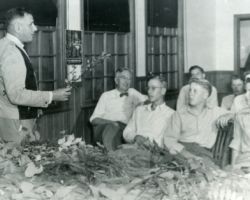
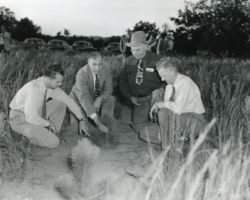
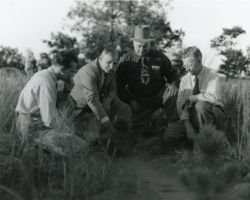
These images may be used under the Creative Commons Attribution-NonCommercial-NoDerivatives 4.0 International License.

